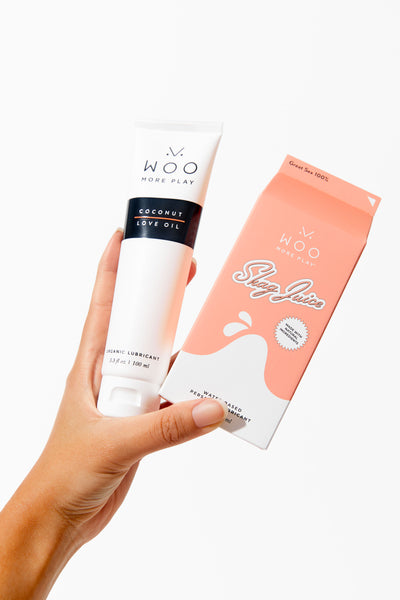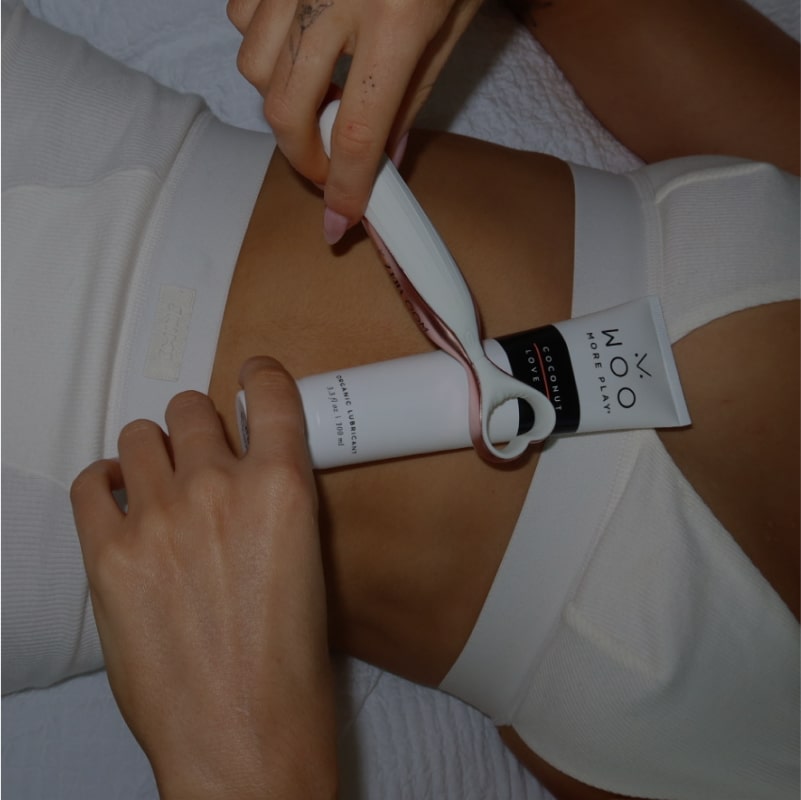Feminine pH Balance: How to Keep Your Vagina Healthy
(the female body)
Treat her like the queen she is
Your vaginal pH balance is basically your body’s built-in security system for keeping things fresh, healthy, and irritation-free. But between sex, periods, hygiene products, and everyday life, things can get a little out of whack.
So, what exactly is vaginal pH, and why should you care? More importantly, how do you keep your healthy bacteria thriving while avoiding annoying infections, itching, burning, and unwanted smells? Let’s break it all down.
What Is Vaginal pH, And Why Does it Matter?
Your vaginal pH balance refers to how acidic or alkaline your vagina is, measured on the 0 to 14 pH scale. A healthy vagina falls somewhere between 3.8 and 4.5, meaning it’s slightly acidic.
This acidic environment is crucial because it keeps bacteria and yeast in check, preventing infections like bacterial vaginosis (BV) from taking over.
When your pH balances tip the wrong way—especially if your vaginal pH levels are higher than 4.5—you’re more at risk for infections, unwanted odors, and irritation.

What Messes With Your Vaginal pH?
Your vagina is a self-cleaning queen, but plenty of everyday things can disrupt its natural vaginal flora and create an imbalance.
Sex
Yep, sex can throw things off—especially unprotected sex. Semen has a basic alkaline pH of around 7.1 to 8, meaning it temporarily raises your vaginal pH levels. While your body usually corrects itself, frequent exposure can make you more prone to infections like bacterial vaginosis and yeast infections.
How to Balance It: Pee after sex (always), skip the harsh stuff, keep intimate wipes like Freshies on standby—and make sure your partner shows up squeaky clean too. Good hygiene on both sides = way less risk of throwing things off down there.
Menstrual Cycle & Menstrual Blood
Your menstrual cycle naturally shifts your vaginal pH balance because menstrual blood is more alkaline. If you’ve ever noticed that things feel “off” down there after your period, that’s why.
How to Balance It: Keep your intimate area clean and swap out your pad, tampon, etc. often. Change pads every 3-4 hours and tampons every 4 hours, or sooner if they feel saturated.
Hygiene Products
Douching? Harsh soaps? Artificially scented products? Big no-no’s. Anything inserted into the vagina that isn’t pH-balanced can strip away your natural healthy bacteria and lead to vaginal infections.
How to Balance It: Stick to body-friendly washes that cleanse without stripping your skin or disrupting your vaginal flora.
Hormones & Birth Control
Estrogen levels play a huge role in maintaining a healthy vagina. When estrogen drops (like during menopause, pregnancy, or when using hormonal birth control methods), your vaginal tissues can become drier and more prone to infections.
How to Balance It: If you experience vaginal dryness, try vaginal moisturizers or water-based lubes like Shag Juice to keep things comfortable. And, if dryness is becoming a persistent issue, we def recommend talking to your doctor.

How To Restore And Maintain A Healthy Vaginal pH
Now that you know what messes with your vaginal health, here’s how to keep your pH balances in check and avoid unhealthy vaginal discharge and irritation.
1. Wipe Smarter, Not Harder
Give your girl a clean after sex, after a sweaty gym session, or even just for a mid-day refresh. Again, Freshies pH-balanced wipes are the perfect way to gently cleanse without disrupting your vaginal flora.
2. Load Up on Probiotics
Probiotics (either from foods like yogurt or supplements) help maintain the good bacteria that support a healthy vaginal pH balance.
3. Stay Hydrated
A well-hydrated body = a well-hydrated vagina. Drink plenty of water to keep things running smoothly.
4. Be Mindful Of Period Products
Choose organic pads and tampons, menstrual cups, or reusable pads made with medical-grade silicone to reduce exposure to harmful chemicals linked to health concerns.
5. Use Protection
Since semen can alter your vaginal pH levels, using condoms can help maintain a more stable vaginal pH balance while also reducing the risk of sexually transmitted infections.
6. Avoid Douching – Your Vagina Doesn’t Need It
Douching, which is when your V from the inside, is a big no no. If there’s one thing to take off your shopping list forever, it’s douching products.
Your vagina is self-cleaning, and douching disrupts the healthy bacteria that keep everything in balance. Plus, it can actually increase your risk of bacterial vaginosis (BV) and yeast infections by flushing out the good bacteria and allowing harmful bacteria to thrive.
What to Do Instead: Stick to external cleansing only with a gentle, pH-balanced wash. Your vagina will thank you.
7. Manage Stress And Get Enough Sleep
Yes, stress can mess with your vaginal health too. When you're stressed, your body's cortisol levels rise, which can impact your menstrual cycle, weaken your immune system, and make you more susceptible to vaginal infections. Poor sleep also plays a role, as it can affect hormone levels and disrupt your body's ability to maintain a healthy vaginal pH balance.
How to Fix It:
- Prioritize quality sleep—aim for at least 7-9 hours a night.
- Reduce stress with mindfulness, yoga, or a good orgasm (yes, orgasms help regulate stress hormones!).
- Stay active—exercise improves blood flow and supports overall vaginal health.
9. Hydration & Diet: Feed Your pH The Right Way
What you put into your body directly impacts your vaginal pH levels. A diet high in processed foods, sugar, and alcohol can throw off your vaginal flora, making you more prone to infections and irritation.
On the flip side, nutrient-rich foods help keep your vaginal health in check by supporting the growth of healthy bacteria and maintaining an acidic environment where bacteria and yeast stay balanced.
What To Eat For A Happy, Balanced Vagina:
✔️ Probiotic-rich foods (yogurt, kimchi, sauerkraut) to boost healthy bacteria
✔️ Leafy greens & cruciferous veggies (spinach, kale, broccoli) for optimal vaginal flora
✔️ Hydrating fruits (watermelon, oranges, cucumbers) to prevent vaginal dryness
✔️ Cranberries & garlic to ward off UTIs and support a healthy vagina
✔️ Omega-3s (salmon, flaxseeds, walnuts) for reducing inflammation and improving blood flow
And let’s not forget water! Staying hydrated helps flush out toxins, reduce vaginal discharge odor, and keep your vaginal pH balance in check. If you ever needed an excuse to carry around that oversized water bottle, consider this your sign.
When To Talk To Your Doctor
If you’re experiencing frequent infections, itching, burning, unusual vaginal discharge, or irritation, it’s always best to talk to your healthcare provider. They can test your vaginal pH levels and recommend the right treatment.
Final Thoughts On Feminine pH Balance
Your vagina lowkey knows how to take care of itself, but a little extra love never hurts. By using safe, pH-balanced products like Freshies and Shag Juice, choosing period products that don’t introduce toxic chemicals, and keeping an eye on what goes near your bikini line, you can support a healthy vaginal pH balance and avoid discomfort.
Whether it’s after sex, during your menstrual cycle, or just everyday maintenance, these small shifts can make a big difference in your vaginal health—and make sure you’re always feeling fresh and ready for whatever comes next.
























